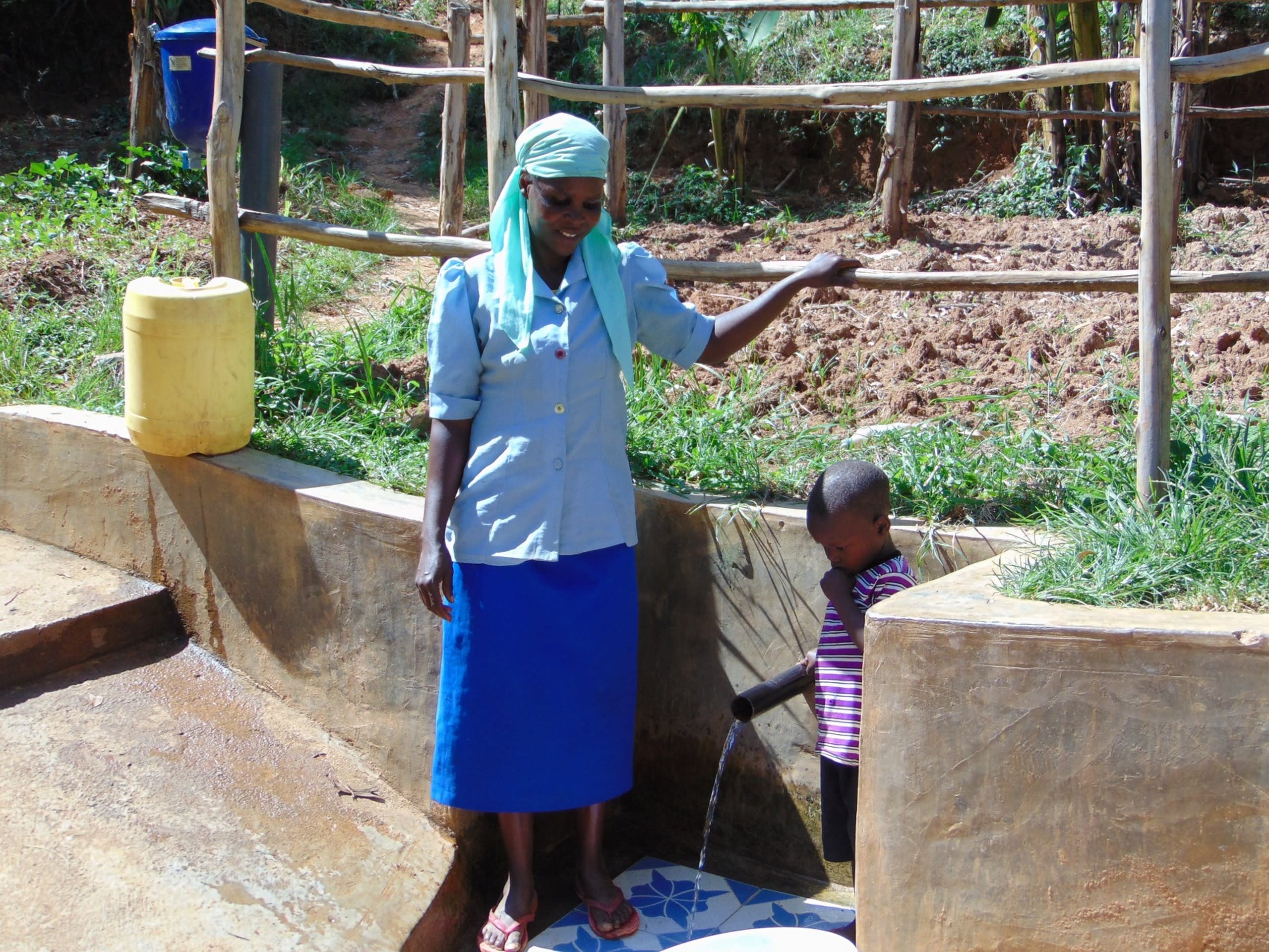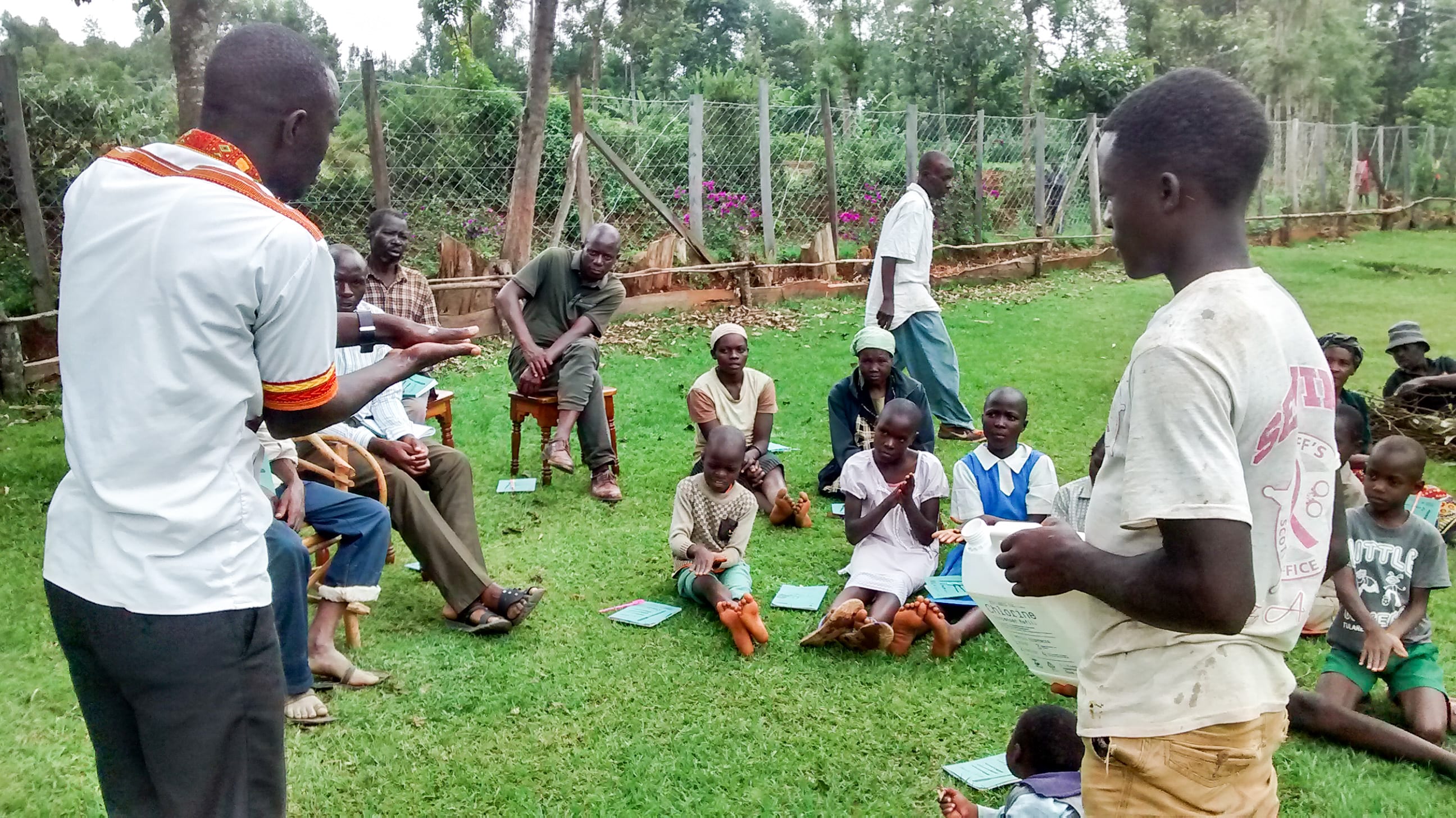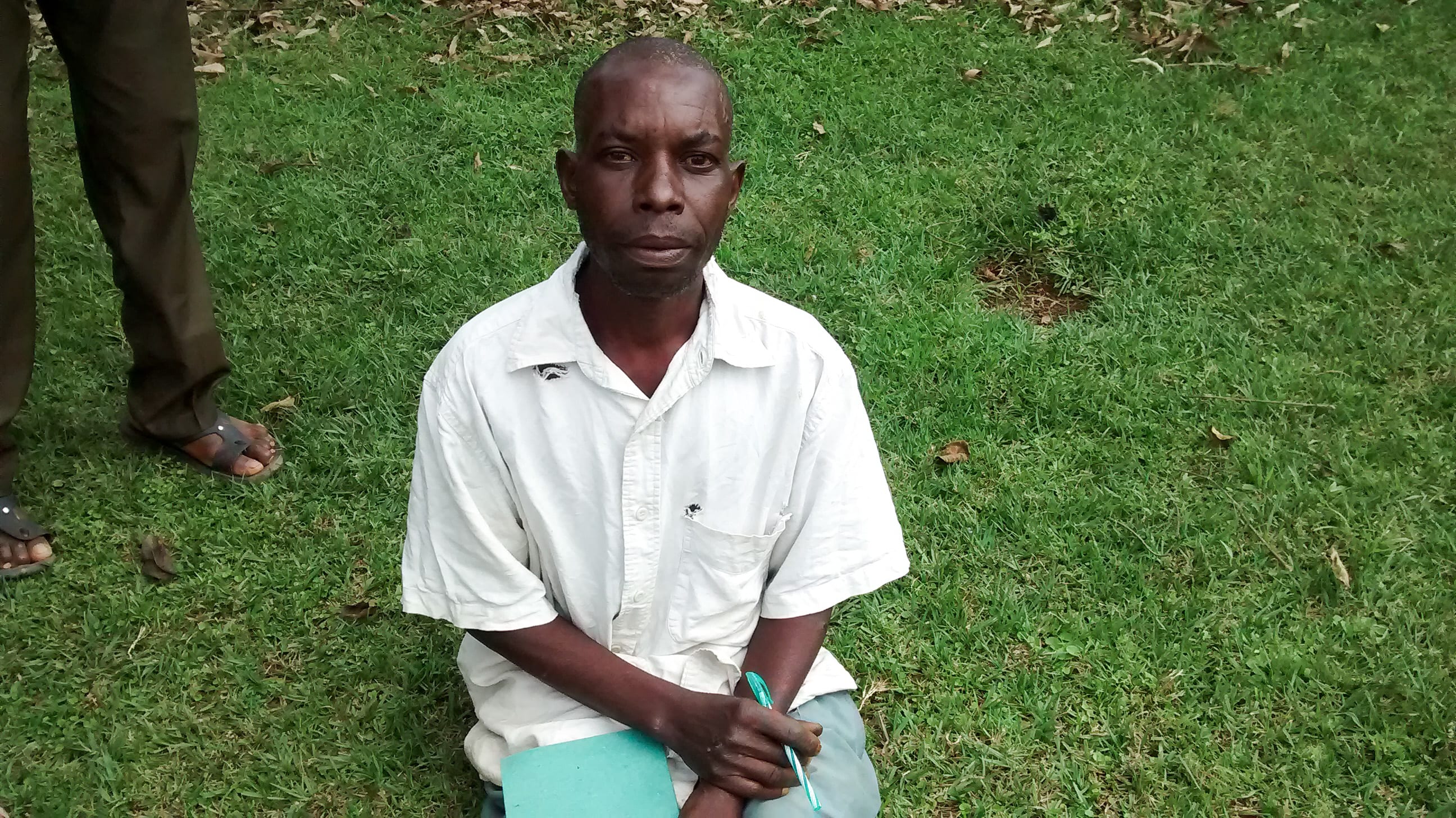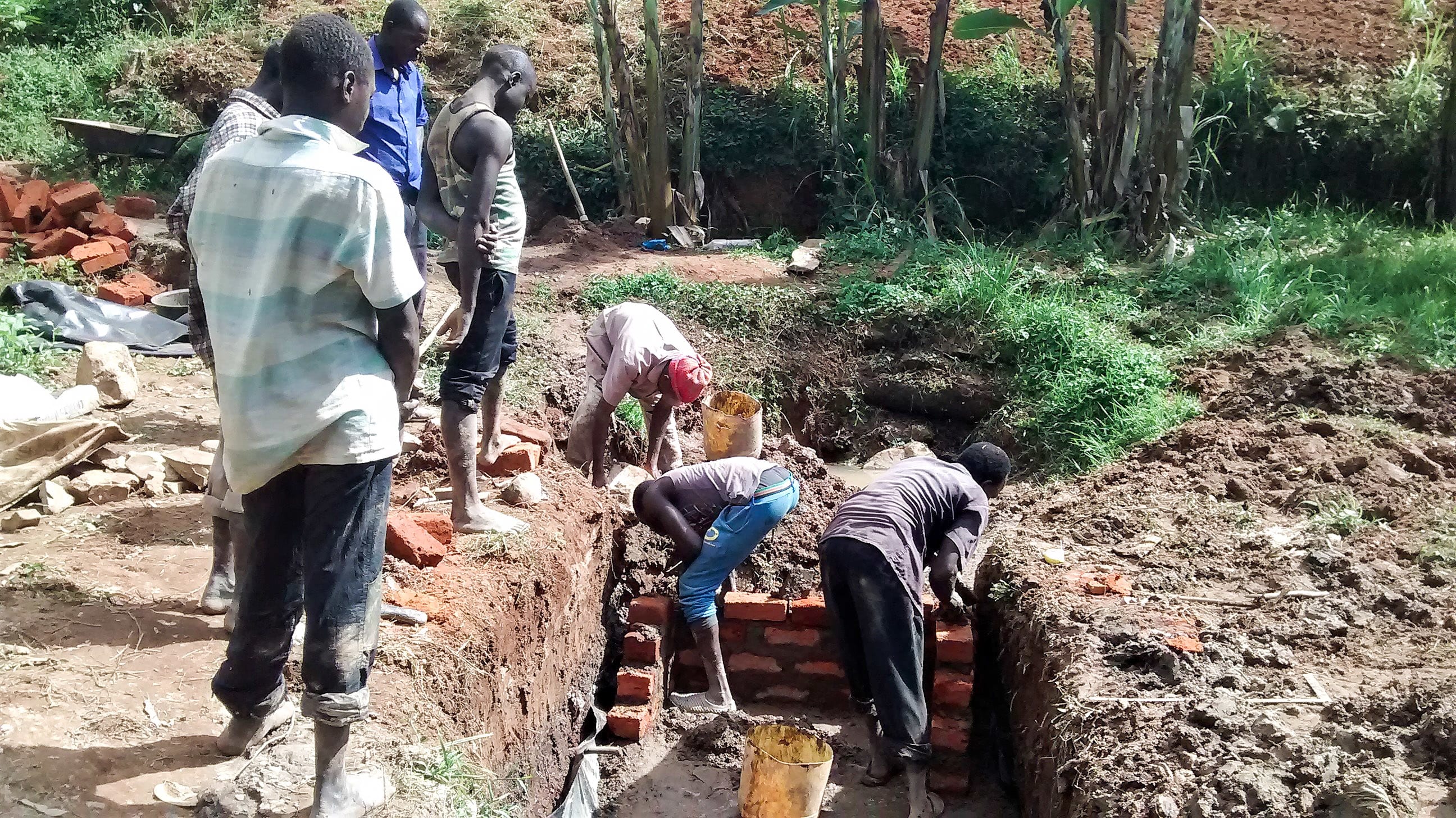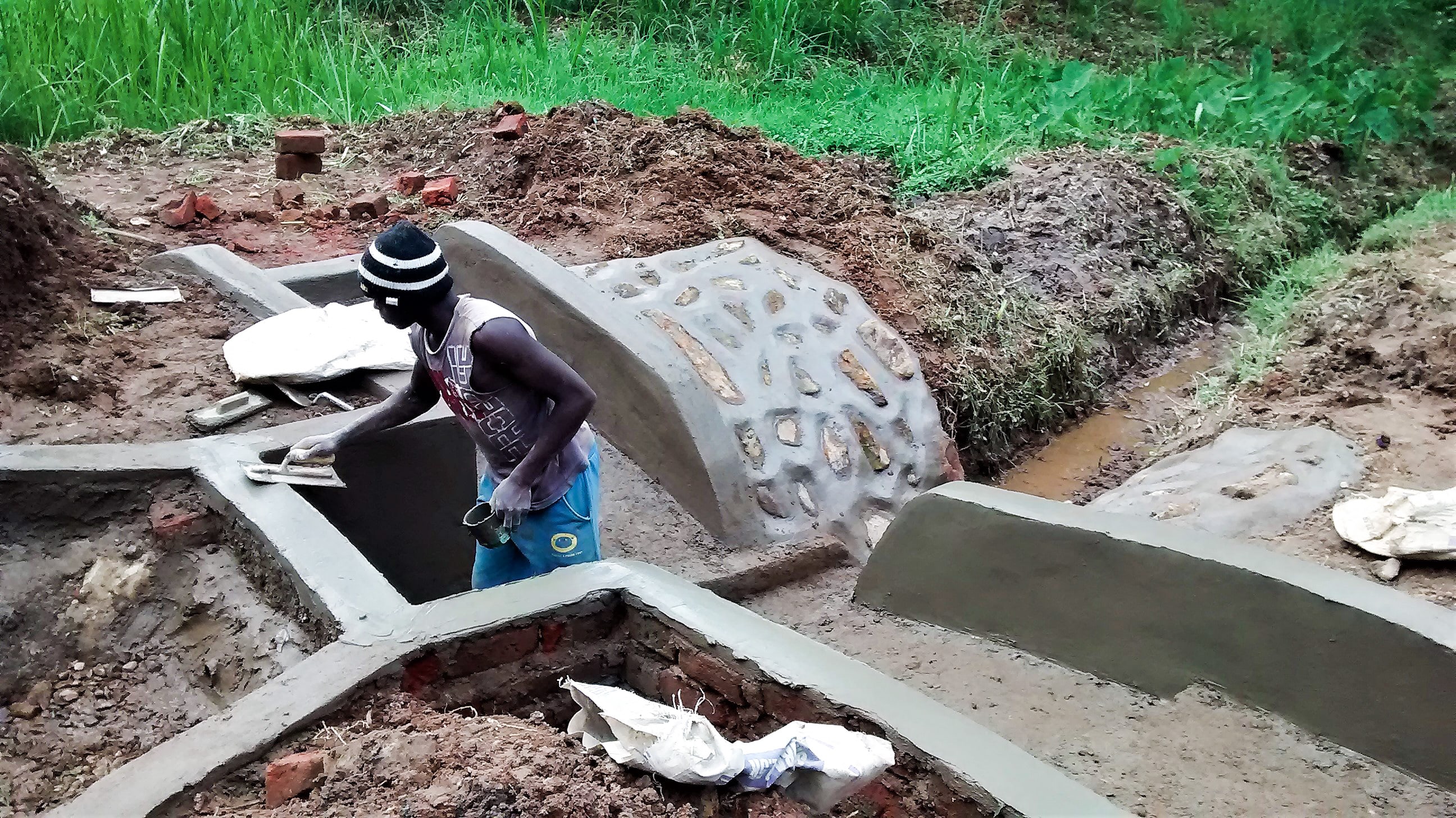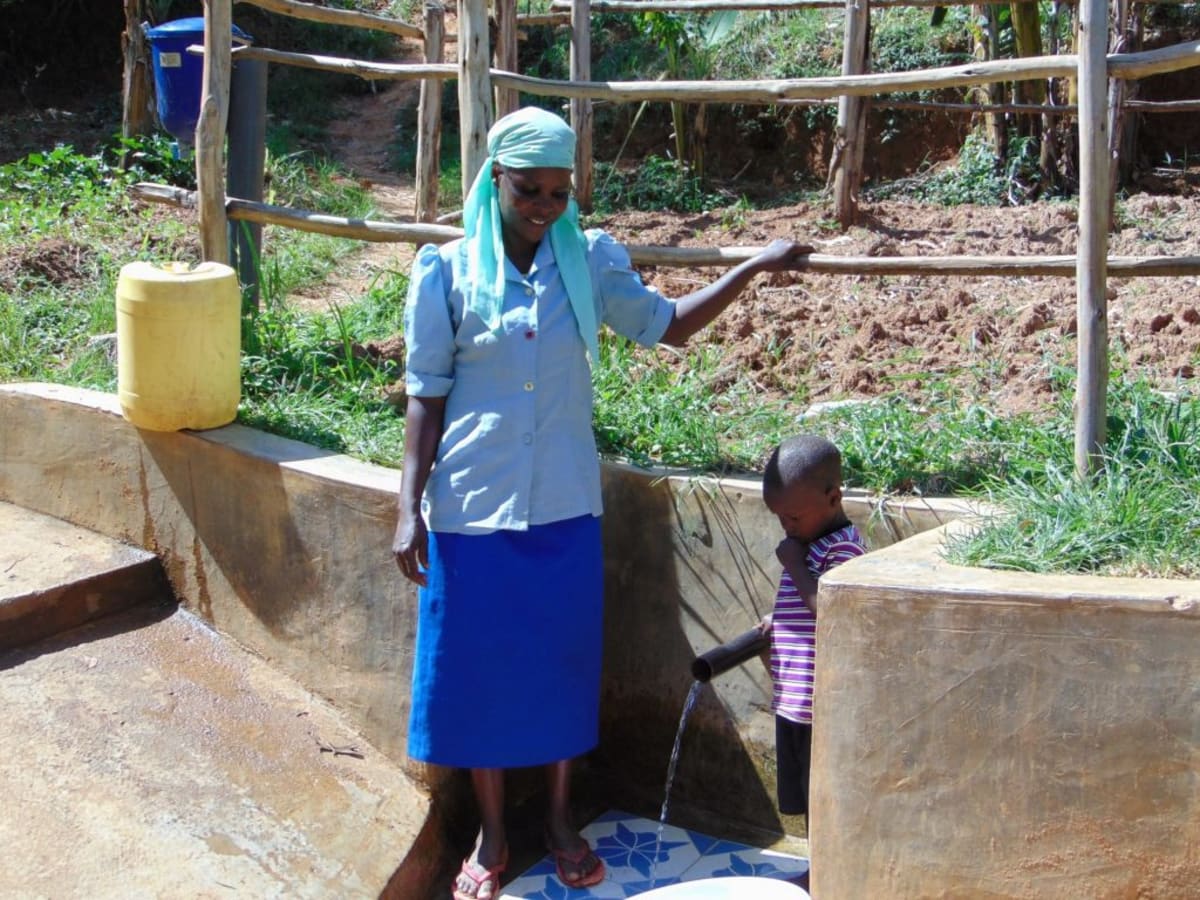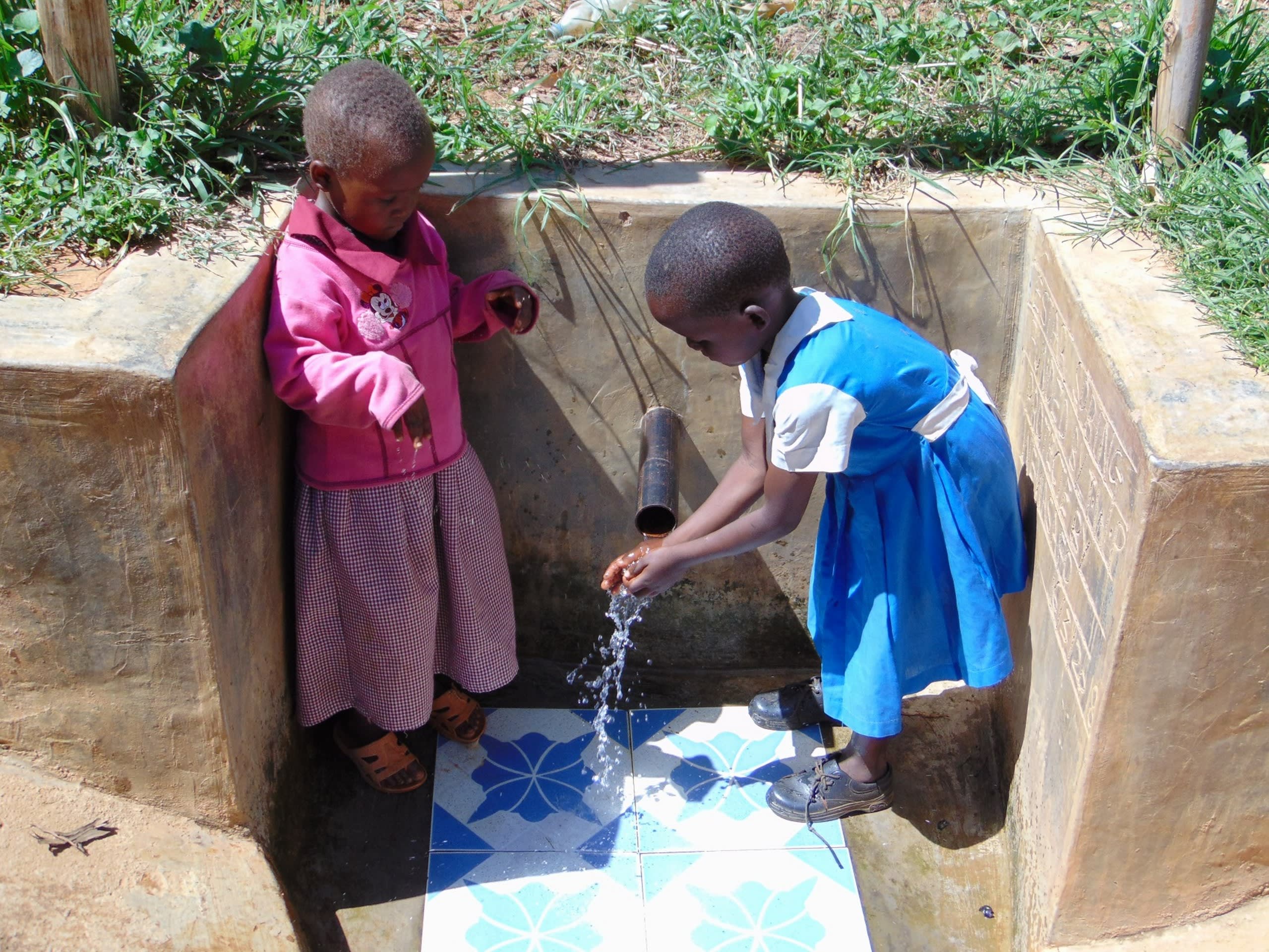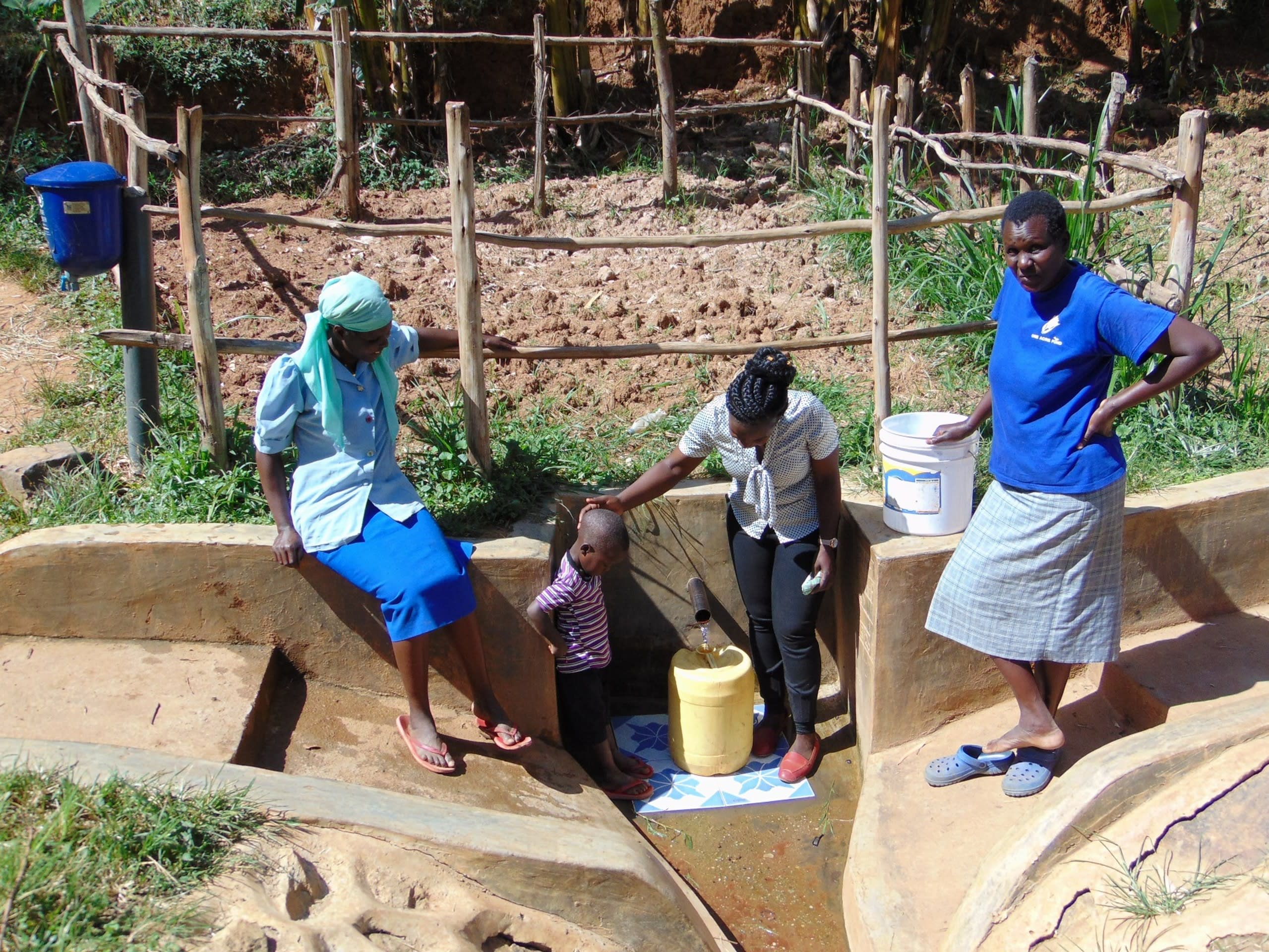Fetching water, cultivating land, shepherding animals, going to prayer meetings, smearing houses with cow dung to keep away jiggers, picking tea, and brewing and drinking alcohol are some of the daily activities that take place in Bumavi. Many local men have embraced alcohol, leaving the brunt of hard work to their wives. These women must work extraordinarily hard to provide food, do chores, and pay school fees for their children. When the children are out of school, they work alongside their mothers.
Water
This community has tried to get clean water for years. They've known that if they protect Esther Spring, water will no longer be contaminated. Unfortunately, this area has been ravaged by malaria and HIV/AIDS, and money dwindles as people care for their loved ones.
Thus, the dirty water from Esther Spring must meet everybody's needs, from drinking to cleaning. Community members constantly suffer from diarrhea. If they could afford go to the clinic for help each time, they'd most likely be diagnosed with typhoid.
Hygiene and Sanitation
Less than half of families living in this part of Bumavi have a pit latrine. The ones we observed are almost full, with very wide pits that endanger small children. Some don't even have doors, so there's no privacy. Because of these poor conditions, some families who have a latrine don't even use them. The other families either share with a neighbor or seek the privacy found behind other buildings or bushes.
Hand-washing is not practiced here, nor are there many sanitation tools like dish racks or clotheslines for keeping things off the ground and clean.
Melody Andaye said, "This community is dirty everywhere, and we shall prevent many diseases caused by poor health as a result of the training that you will bring."
Here’s what we plan to do about it:
Training
Community members will attend hygiene and sanitation training to give them a chance to learn about healthy practices and their importance. The facilitator plans to use PHAST (Participatory Hygiene and Sanitation Transformation), CLTS (Community-Led Total Sanitation), ABCD (Asset-Based Community Development), group discussions, handouts, and demonstrations at the spring. One of the most important topics we plan to cover is the handling, storage, and treatment of water. Having a clean water source will be extremely helpful, but it is useless if water gets contaminated by the time it’s consumed.
Hand-washing will also be a big topic. And since open defecation was encountered here, this is at the top of our list of things to address. Waste always needs to be disposed of properly, or else it will be spread by flies or rainwater.
Training will also result in the formation of a committee that will oversee operations and maintenance at the spring. They will enforce proper behavior around the spring and delegate tasks that will help preserve the site, such as building a fence and digging proper drainage.
Training will inform the committee and the rest of the community about what they need to contribute to make this project a success. They must mobilize locally available materials, such as bricks, clean sand, hardcore, and ballast. All community members must work together to make sure that accommodations and food are always provided for the work teams.
Sanitation Platforms
On the final day of training, participants will select five families that should benefit from new latrine floors. The five families must prepare by sinking a pit for the sanitation platforms to be placed over.
Spring Protection
Protecting the spring will ensure that the water is safe, adequate and secure. Construction will keep surface runoff and other contaminants out of the water.
Fetching water is predominantly a female role, done by both women and young girls. Protecting the spring and offering training and support will therefore help empower female community members like Melody by giving them more time and efforts to engage and invest in income-generating activities.
This project is a part of our shared program with Western Water And Sanitation Forum (WEWASAFO). Our team is pleased to provide the reports for this project (formatted and edited for readability) thanks to the hard work of our friends in Kenya.

 Protected Spring
Protected Spring
 Rehabilitation Project
Rehabilitation Project










